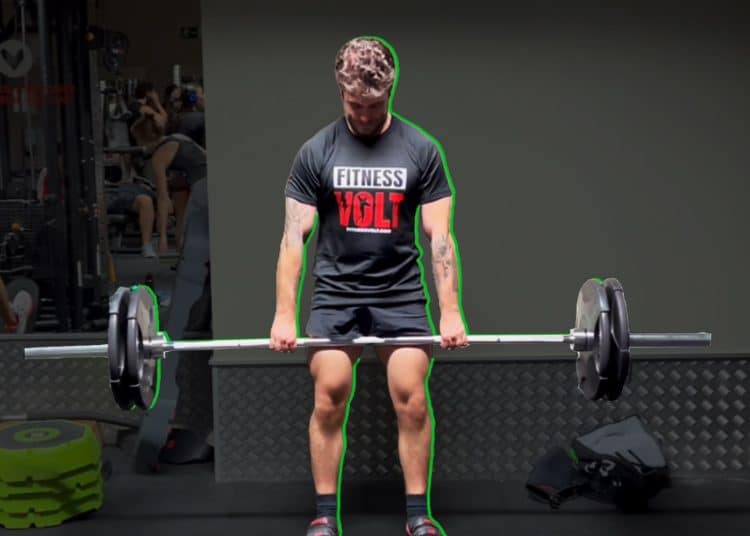As a 30-year veteran personal trainer, I’ve seen it all: clients struggling to make progress despite putting in the hours, gym-goers frustrated by stalled results, and even seasoned lifters falling into common programming traps.
Whether you’re a beginner or an experienced lifter, understanding the impact of your training decisions is crucial for progress. You can’t expect to make gains if your programming is off, and it’s easy to miss the mark when you’re too focused on working harder instead of smarter.
The good news? With a few tweaks to your approach, you’ll start seeing the results you deserve.
In this article, I’ll break down 11 of the most common programming mistakes while providing actionable fixes to get your training back on track.
Mistake #1: Training Without a Clear Goal
According to the specificity principle, your body adapts to the type of training you do. Therefore, if you want to achieve something specific, you must train in a way that produces the results you want.
Level Up Your Fitness: Join our 💪 strong community in Fitness Volt Newsletter. Get daily inspiration, expert-backed workouts, nutrition tips, the latest in strength sports, and the support you need to reach your goals. Subscribe for free!
So, before embarking on any training program, it’s essential to have a goal. This can be as simple as wanting to build muscle or more complex, like preparing for a local powerlifting meet. Goals can be short, medium, or long-term, but having one gives your training much more direction and purpose.
As the saying goes, “You can’t hit a target you’re not aiming at.” In the same way, without a clear goal, your training won’t be as productive as it should be.
Related: Build Your Program: How to Design the Perfect Training Plan
Mistake #2: Skipping Progressive Overload
You are only as strong—or fit, or muscular—as your last workout, and you’ll quickly find yourself stuck in a rut if your training doesn’t get harder over time. The best way to avoid this is through progressive overload.
With progressive overload, you gradually increase the difficulty of your workouts by manipulating one or more of the following training variables:
- Increasing your weights
- Doing more reps
- Doing more sets
- Reducing rest periods between sets
- Using more challenging exercises
- Incorporating training systems into your workouts (e.g., drop sets, supersets, etc.)
- Increasing training frequency
- Switching programs
In many cases, small but regular changes work best, like adding a rep or raising your weights by a couple of pounds each week. However, when those methods become less effective, bigger adjustments—such as adopting a new training plan—will help keep you on track.
For best results, you should plan your progressive overload strategy in advance, i.e., as you design your program.
Mistake #3: Doing Too Much “Junk Volume”
If three training sets produce good results, doing more will produce better results, right?
Not necessarily.
Studies suggest there is a point of diminishing returns, and once you cross it, your training won’t be any more productive—even if you add more sets. Research indicates that 12-20 sets per muscle group per week is the “sweet spot” for strength and muscle gains. Doing more is just a waste of time and energy (1).
In running, training that provides no real benefit is called “junk miles,” but in strength training, we call it “junk volume.”
Doing more work than necessary can actually undermine your progress by limiting recovery between workouts.
So, forget ultra-high volume training programs. Instead, figure out how little volume you need to achieve your goals. In many cases, this will be a lot lower than you thought. After all, studies show that even 2-3 sets per week per muscle group will produce increases in strength and muscle size (2).
Related: I Tried Ronnie Coleman’s High-Volume Bodybuilding Split for 4 Weeks — Here’s What Happened
Mistake #4: Using The Wrong Training Frequency
Leading on from the point above, many exercisers fall into the trap of training their muscles too often, e.g., four or more times per week. You’ve probably seen these guys in the gym—every day is chest or arm day!
While high-frequency workouts can produce results, it’s essential to understand that you can have too much of a good thing, and more days off may actually make your workouts more effective. It’s generally accepted that muscles respond best to 2-3 workouts per week.
You can achieve this with full-body workouts, such as a Monday-Wednesday-Friday training schedule, or by following a split routine, where different muscles are trained each day, e.g.:
- Monday: Back and biceps
- Tuesday: Chest and triceps
- Wednesday: Legs and shoulders
- Thursday: Back and biceps
- Friday: Chest and triceps
- Saturday: Legs and shoulders
- Sunday: Rest
Just like training volume, you can have too much frequency. Training your muscles more than 2-3 times a week seldom produces better results than a more moderate workout schedule.
Mistake #5: Poor Exercise Selection
While it’s unfair to say that any exercise is inherently bad, it’s a fact that some exercises are better than others. The right exercise for you depends on your needs and goals, as well as your experience and abilities. Safety is also a critical consideration.
In most cases, your workout should contain both compound and isolation exercises, with the former making up the bulk of your program. Compound exercises—e.g., squats, deadlifts, lunges, leg presses, overhead presses, lat pulldowns, and rows—provide the biggest bang for your workout buck.
Related: These Are the Best Compound Movements for Every Muscle
In contrast, isolation exercises, such as pec flyes, leg extensions, and triceps pushdowns, are best treated as the icing on your compound-exercise cake!
Related: 81 Best Isolation Exercises by Muscle Groups
Level Up Your Fitness: Join our 💪 strong community in Fitness Volt Newsletter. Get daily inspiration, expert-backed workouts, nutrition tips, the latest in strength sports, and the support you need to reach your goals. Subscribe for free!
So, think like a mechanic and choose the best tool for the job. Poor exercise selection will undermine your progress and could even lead to injury.
Mistake #6: Putting Exercises in The Wrong Order
When it comes to creating an effective workout, the order of the exercises matters. Get it right, and your program will flow beautifully, and you’ll be able to push every exercise to the limit. But, get things wrong, and you could run out of energy before you reach the end.
In general, it’s best to start your workout with the hardest, heaviest exercises, progressing to the easier movements as your energy levels start to decrease. For example:
- Squats
- Leg press
- Lunges
- Leg extensions
- Leg curls
- Calf raises
You may also need to sequence your exercises to avoid unwanted overlaps or accidentally undermining your performance. For example, doing triceps extensions before bench presses will make bench presses harder than they need to be and will reduce the weight or number of reps you can perform.
So, remember—it’s about prioritizing strength and performance when you’re fresh. The right exercise order sets you up for better results while avoiding the risk of burnout.
Mistake #7: Never Changing Your Program

We have a saying in fitness, “If you always do what you have always done, you’ll always get what you always got.” While this might seem like an unnecessarily tricky tongue-twister, it underlines the importance of periodically changing your program.
Another way to look at it is like this: to change your body, you sometimes need to change your program.
Even the best workouts will eventually stop working. Your muscles simply get bored of doing the same thing over and over and cease adapting. At first, your progress will slow, and then it will stall. You may even find yourself regressing and losing your hard-won gains.
You can prolong the life of your program by adhering to the progressive overload principle discussed in point #2 of this article. However, once your program is past its use-by date, it’s time for a new one. That doesn’t mean you can’t come back to it in a few months but, for now, a new program will help maintain your progress.
Mistake #8: Switching Programs Too Often
At the risk of contradicting point #7, while you should change your workout program every few months or when it stops working, it’s a mistake to change it too often. Your body needs time to adapt to your current workout regimen, and if you keep changing it, your body won’t really know what adaptations you are trying to produce.
Some exercisers believe in something called the muscle confusion principle, thinking that frequent workout variations help “shock” your muscles into continued progress. However, studies suggest that constantly changing programs can undermine your results (3).
So, avoid becoming a “program butterfly” and flitting from workout to workout. Instead, create a plan and follow it until your progress starts to slow, making sure you employ all the progressive overload methods discussed previously. Only switch programs when your body tells you it’s time to do so.
Mistake #9: Neglecting Rest and Recovery
Intense, frequent workouts take a lot out of your body. They use energy and damage your muscles, causing something called microtrauma. This is accompanied by inflammation. While all these things may sound worrying, they’re actually the trigger for strength increases and muscle growth.
However, increases in fitness, strength, and muscle size only happen when you rest and recover. Training too hard and too often, failing to get enough sleep, stress, and other physical and emotional demands can inhibit recovery and will affect your progress if left unchecked.
Consequently, an effective workout program must include time for rest and recovery. To make progress, you must put back into your body what your training takes out.
Related: 6 Recovery Mistakes Everyone Makes (And How to Avoid Them)
Mistake #10: Skipping Deload Weeks
Progress is not linear. Sometimes, you’ll feel like every workout is taking you a step forward, while other times, you’ll feel like you are going nowhere fast. It’s very frustrating! One way to limit these progress stops and starts is to include periodic deloads in your training plan.
A deload is where you purposely ease back on your workouts, reducing training intensity and/or volume, to provide your body with some much-needed active rest. Invariably, you’ll come back stronger after a deload, ready to crush your next series of workouts.
The key to making the most of deload weeks is planning them in advance. Chances are, if you feel you need a deload, it’s already too late. It’s usually better to use them preemptively, i.e., before they become necessary.
One way to do this is to use them after a run of gradually progressive workouts, like this:
- Week 1 – low volume, moderate intensity training
- Week 2 – medium volume, moderate intensity training
- Week 3 – medium volume, high intensity training
- Week 4 – high volume, high intensity training
- Week 5 – deload (low volume, low intensity training)
- Week 6 – start over
Regular deloads allow you to consolidate your gains, replenish your energy, elevate your motivation, and get ready for another big push toward your training goals.
Learn more about deloads in this in-depth guide.
Mistake #11: Following Elite-Level Programs You’re Not Ready For
Imagine that you’re a novice runner. Despite having only just started jogging, you try following an Olympic marathon runner’s training program. Needless to say, you won’t last long on such a regimen, and exhaustion and injury are likely to follow.
And yet, this is exactly what a lot of gym-goers do when they follow an elite-level strength training program, such as one used by their favorite pro bodybuilder.
Your training age—how long you’ve been lifting—determines the type of workout your body can cope with. The longer you’ve been working out, the more resilient you’ll be. Try to train too hard or too long too soon, and you’ll probably make very little progress. You could even end up injured.
So, enjoy reading about the training exploits of your favorite athletes and be inspired by them. However, don’t try to emulate your heroes until you’ve got a few more years of consistent training under your weightlifting belt. You must learn to walk before you can run.
Closing Thoughts
Your time, energy, and motivation are valuable commodities, so don’t waste them on ineffective workouts. Avoid these programming mistakes and you’ll make more progress in a few months than most people make in years!
Already making these errors? No problem—you now know how to fix them and get back on track. Just don’t make them again, okay?
References:
- Baz-Valle E, Balsalobre-Fernández C, Alix-Fages C, Santos-Concejero J. A Systematic Review of The Effects of Different Resistance Training Volumes on Muscle Hypertrophy. J Hum Kinet. 2022 Feb 10;81:199-210. doi: 10.2478/hukin-2022-0017. PMID: 35291645; PMCID: PMC8884877.
- Ralston GW, Kilgore L, Wyatt FB, Baker JS. The Effect of Weekly Set Volume on Strength Gain: A Meta-Analysis. Sports Med. 2017 Dec;47(12):2585-2601. doi: 10.1007/s40279-017-0762-7. PMID: 28755103; PMCID: PMC5684266.
- Kassiano W, Nunes JP, Costa B, Ribeiro AS, Schoenfeld BJ, Cyrino ES. Does Varying Resistance Exercises Promote Superior Muscle Hypertrophy and Strength Gains? A Systematic Review. J Strength Cond Res. 2022 Jun 1;36(6):1753-1762. doi: 10.1519/JSC.0000000000004258. Epub 2022 Apr 1. PMID: 35438660.


















